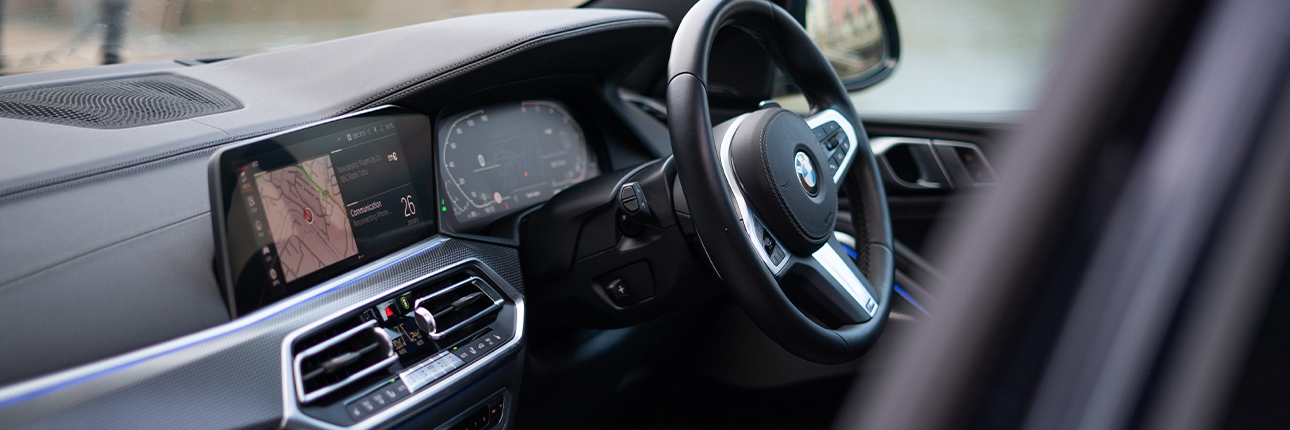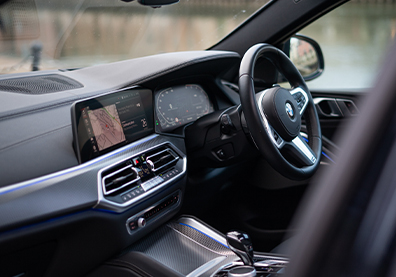We use cookies to make your experience better. To comply with the new e-Privacy directive, we need to ask for your consent to set the cookies. Learn more.


What is Adaptive Cruise Control?
Adaptive Cruise Control (ACC) is an advanced driver assistance system found in many modern vehicles, and is available on a wide range of cars currently in stock at Tangelo. It’s essentially an enhancement of the traditional cruise control system, with the key difference being ACC’s ability to automatically adjust and maintain a safe following distance from the vehicle ahead.
How does Adaptive Cruise Control work?
While standard cruise control only maintains a constant speed, ACC monitors the road ahead and adjusts the vehicle's speed to keep a safe distance from the vehicle in front. Here’s how it works:
- Sensing: The vehicle is equipped with sensors, such as radar or cameras mounted on the front grille or other strategic locations. These sensors continuously scan the road ahead, measuring the distance and relative speed of the vehicle in front.
- Following distance setting: The driver can set a preferred following distance, typically measured in seconds. For example, the driver can choose to maintain a two-second gap from the vehicle in front.
- Speed adjustment: Once the adaptive cruise control is engaged and the desired following distance is set, the system will automatically adjust the vehicle's speed by either accelerating or decelerating to maintain that pre-set gap.
- Automatic braking: If the vehicle ahead slows down or comes to a stop, the adaptive cruise control system will apply the brakes automatically to maintain the safe following distance.
- Resuming speed: Once the road ahead is clear, and the vehicle in front starts moving again, the adaptive cruise control will accelerate the vehicle back to the set speed or the speed limit, depending on the driver's preference.
How do you use Adaptive Cruise Control?
The exact steps for using Adaptive Cruise Control may vary slightly depending on the make and model of your car, but here is a general guide:
- Check your vehicle's compatibility: Ensure that your car is equipped with Adaptive Cruise Control. This feature is typically available in newer cars, particularly in higher trim levels or as part of optional packages.
- Turn on the system: Start your vehicle and locate the ACC controls on your steering wheel or dashboard. It's usually marked with an icon representing a car with radar waves in front.
- Activate ACC: Press the ACC button or enable it from your car's infotainment system, if applicable.
- Set your desired speed: Drive your vehicle to the desired speed manually, using the accelerator pedal, and then press the "SET" button on the steering wheel. This sets your current speed as the target speed for the ACC system.
- Adjust following distance: Most ACC systems allow you to adjust the following distance to the vehicle ahead. You can do this using buttons or controls on the steering wheel. Common options are "Short," "Medium," and "Long" following distances.
- Observe the system in action: As you approach another vehicle on the road, the ACC system will automatically detect it using radar or camera sensors and adjust your car's speed to maintain a safe distance from the vehicle in front.
- Stay alert: While ACC can handle acceleration and braking, it is not a substitute for attentive driving. You must remain focused on the road, keep your hands on the steering wheel, and be prepared to take control of the vehicle if needed.
- Use other features: Many modern vehicles equipped with ACC also offer additional safety features like Lane Keeping Assist, which helps you stay in your lane, and Traffic Jam Assist, which can help with stop-and-go traffic.
- Deactivate ACC when necessary: You can disable ACC at any time by either pressing the "OFF" button on the steering wheel or lightly tapping the brake pedal.
What are the advantages of Adaptive Cruise Control?
As well as peace of mind on the open road, Adaptive Cruise Control offers several advantages that enhance driving comfort, safety, and convenience. Other benefits include:
- Improved driving experience: Automatically maintaining a safe driving distance, ACC reduces the need for constant braking and accelerating, especially in stop-and-go traffic, leading to a smoother driving experience.
- Reduces driver fatigue: By handling speed adjustments in traffic, ACC can reduce driver fatigue during long journeys. It allows the driver to focus more on steering and other critical aspects of driving, making the trip less tiring.
- Enhances safety: ACC minimizes the risk of rear-end collisions, making it useful in situations where a sudden deceleration is required.
- Reduces fuel consumption: By maintaining a consistent speed and optimizing acceleration and braking, ACC can lead to improved fuel efficiency and reduced CO2 emissions.
- Complements other safety features: ACC often works hand-in-hand with other driver assistance systems, such as collision warning and automatic emergency braking. These combined features provide an additional layer of safety by alerting the driver and applying the brakes if necessary.
- Smooth driving experience: With ACC, your car will adjust its speed more smoothly compared to traditional cruise control, which helps prevent jerky acceleration or braking.
